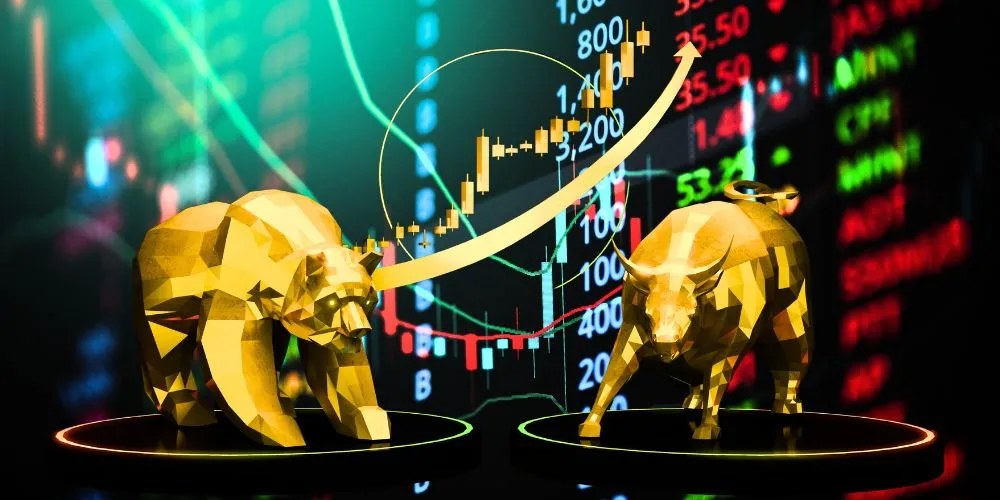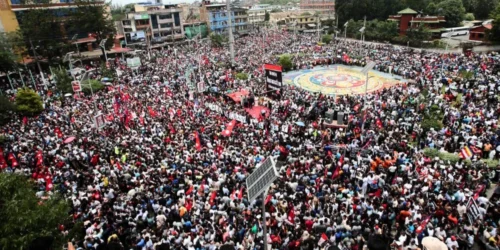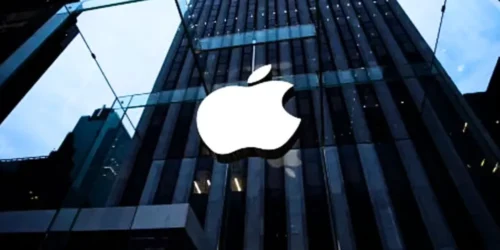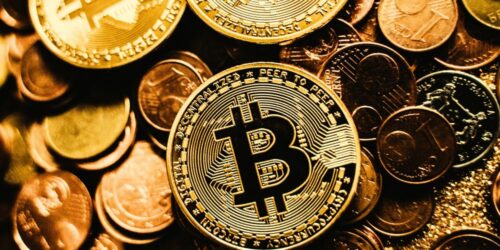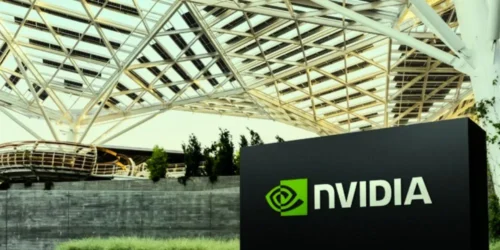It is the grandest theater of human ambition ever conceived. Its daily drama unfolds not on a stage of wood and velvet, but on a flickering screen of numbers, a relentless cascade of green and red. It has no single director, yet the hopes, fears, and raw animal spirits of millions choreograph it. It is a place of breathtaking creation and shocking destruction, a cathedral where fortunes are built and a casino where they are vaporized in the blink of an eye.
To the outsider, it appears as an impenetrable fortress of jargon and complexity—a world of bulls, bears, P/E ratios, and inscrutable charts. To the cynic, it is a rigged game, a playground for the rich to get richer. To the true believer, it is the purest expression of capitalism. This magnificent, self-correcting machine allocates capital to its most productive uses and powers the engine of human progress.
The truth, as always, is far more interesting and messy than any of these simple narratives. The stock market is not a machine; it is a mirror. It is a vast, high-fidelity reflection of us—our collective intelligence and our collective madness, our capacity for brilliant, long-term innovation and our susceptibility to short-term, panic-driven herd behavior.
This is a case study of that mirror. We will not offer you hot stock tips or a “get rich quick” formula. Instead, we will journey into the very heart of this great engine, dissecting its mechanics, its psychology, and its profound, often paradoxical, role in shaping our world. We will follow the journey of a single, iconic company—Apple Inc.—to see how the abstract forces of the market play out in the real world. We will explore the euphoric manias and the gut-wrenching panics that define its history. And we will confront the central, enduring question: Is this magnificent, chaotic, and often brutal system the best we can do?
To understand the stock market is to understand the operating system of our modern world. It is a story of risk, reward, and the relentless, often irrational, human quest to divine the future.
The Anatomy of the Engine – Beyond the Ticker Tape
Before we can appreciate the drama, we must first understand the stage and the players. At its core, the stock market is a remarkably simple idea, a solution to a timeless problem: how do great ideas get funded?
Imagine you are an entrepreneur in the 19th century. You have a brilliant idea for a new railroad that will connect two major cities, revolutionizing trade and travel. The problem is, you need a colossal amount of money to buy the land, lay the track, and build the trains—far more than any single person or bank could provide.
The solution is to form a corporation and divide its ownership into thousands of tiny pieces, called “shares” or “stock.” You then sell these shares to the public. Each person who buys a share now owns a tiny fraction of your railroad company. They have given you their capital, and in return, they have a claim on the company’s future profits. They are not lenders; they are owners. They are betting on you and your idea.
The stock market is simply the organized, regulated marketplace where these shares can be bought and sold. It serves two primary, vital functions:
- The Primary Market: Fueling the Engine: This is where companies “go public” for the first time through an Initial Public Offering (IPO). This is the moment a company first sells its shares to the public, raising the massive amounts of capital it needs to grow, to build factories, to hire engineers, to fund research. This is the stock market as a great funding mechanism, channeling the savings of millions of people into the most promising new ventures.
- The Secondary Market: Providing the Escape Hatch: The primary market would not exist without the secondary market. The secondary market is what we think of as “the stock market”—the New York Stock Exchange (NYSE), the Nasdaq—where investors buy and sell shares from each other. This is crucial. It provides liquidity. If you bought shares in that railroad company, you are not stuck with them forever. You can sell them at any time to another investor who wants to buy them. This ability to easily enter and exit an investment is what gives people the confidence to invest in the first place.
What Are You Buying?
When you buy a share of stock—say, one share of Apple Inc.—you are not just buying a digital blip on a screen. You are buying a legal claim to a tiny fraction of a massive global enterprise. You own a piece of every iPhone, every MacBook, every patent, every gleaming glass-fronted store, and every dollar of cash sitting in Apple’s bank account.
The price of that share, at any given moment, is simply the last price at which a buyer and a seller agreed to make a trade. But what determines that price? This is the central, million-dollar question. In theory, the price is determined by the company’s “fundamental value”—its current earnings, its future growth prospects, the quality of its management, and the strength of its balance sheet. This is the world of fundamental analysis, where investors like Warren Buffett pore over financial statements, trying to calculate the true, intrinsic worth of a business and buy it for less than that worth.
But the market is not a sterile laboratory. It is a swirling mass of human beings. And so, the price is also driven by a far more powerful and unpredictable force: market sentiment. This is the collective mood of the investing public. It is driven by news headlines, by whispers of a new product, by a grim economic forecast, by a tweet from an influential figure. It is driven by the two most powerful emotions in finance: greed and fear.
This creates the market’s fundamental paradox. In the short term, the market is a voting machine, tallying up the shifting whims of popular opinion. It is a chaotic, emotional, and often irrational creature. But in the long term, as the legendary investor Benjamin Graham said, it is a weighing machine. Over time, the froth of sentiment tends to burn off, and the true, underlying value of a business—its ability to generate real profits—is what ultimately determines its worth. The great challenge for any investor is to survive the madness of the voting machine long enough to profit from the wisdom of the weighing machine.
A Story in Three Acts – The Market Through the Eyes of Apple Inc.
To see how these abstract forces play out, let’s trace the story of the market’s relationship with a single, iconic company: Apple. Apple’s journey from a garage startup to the most valuable corporation on Earth is a perfect case study of the market as a funding engine, a brutal arbiter of failure, and a massive amplifier of success.
The IPO and the First Fall from Grace (1980-1997)
In 1980, Apple Computer Inc. went public. Founded just four years earlier by two college dropouts, Steve Jobs and Steve Wozniak, the company was at the forefront of the personal computer revolution. The IPO was a sensation. The company raised over $100 million, instantly creating hundreds of paper millionaires among its early employees. This was the primary market in its purest form: channeling public enthusiasm and capital into a revolutionary new technology. The engine was working.
But the early years were tumultuous. After initial success, Apple stumbled. Steve Jobs, the brilliant but mercurial visionary, was famously forced out of the company he co-founded in 1985. The company, now led by a more conventional “professional” CEO, John Sculley, lost its innovative edge. It produced a series of beige, uninspired, and overpriced computers. It clung to its proprietary operating system while a scrappy competitor, Microsoft, licensed its software to dozens of hardware manufacturers, creating the dominant “Wintel” (Windows + Intel) standard.
The stock market was a brutal and unforgiving judge. As Apple’s market share dwindled and its profits evaporated, its stock price collapsed. The voting machine was casting a decisive “no” vote. By 1997, the company was just 90 days from bankruptcy. The once-bright star of Silicon Valley was on the verge of being extinguished. For an investor who had bought at the peak of the early hype, the stock had been a catastrophic investment. This was the market in its role as executioner, ruthlessly punishing mediocrity and strategic failure. The weighing machine was registering a near-fatal reading.
The Resurrection and the Golden Age (1997-2011)
In a desperate, last-ditch move, Apple’s board brought Steve Jobs back. His return is the stuff of business legend. He immediately streamlined the chaotic product line, famously declaring, “What I’m trying to do is not to waste my time on crap.” He forged a shocking partnership with arch-rival Microsoft to secure a life-saving $150 million investment.
And then, he began to innovate. He launched a string of products that were not just commercially successful but culturally transformative.
- The iMac in 1998, with its colorful, all-in-one design, made computers beautiful and personal again.
- The iPod in 2001, combined with the iTunes Music Store, completely revolutionized the music industry.
- The iPhone in 2007 was not just a new product; it was a paradigm shift, a device that fundamentally rewired human communication and created the entire mobile app economy.
- The iPad in 2010 created a whole new category of computing.
The market watched, at first with skepticism, and then with growing awe. As each new product became a blockbuster hit, Apple’s revenues and profits soared. The fundamentals were no longer just good; they were astonishing. The weighing machine was now groaning under the weight of Apple’s success.
The stock price followed. An investor who had the courage and foresight to buy Apple stock in 1997 and hold it through the next decade would have seen a life-altering return of over 10,000%. This was the market as a massive amplifier of success, rewarding visionary leadership, brilliant execution, and world-changing innovation with an almost unimaginable creation of wealth.
The Empire and the Question of Gravity (2011-Present)
When Steve Jobs died in 2011, a wave of fear swept through the market. The visionary was gone. Could the magic continue? The company, now led by Jobs’s quiet, operational genius of a COO, Tim Cook, faced a new challenge. It was no longer a scrappy underdog; it was a global empire.
Under Cook, Apple’s growth has been different. While it has continued to innovate with products like the Apple Watch and AirPods, its primary genius has been in perfecting and expanding the ecosystem that Jobs built. It has built a massive, high-margin services business (the App Store, iCloud, Apple Music) and has become a master of supply chain management and capital allocation.
The market’s reaction has been fascinating. The stock has continued its incredible ascent, making Apple the first company to reach a $1 trillion, then $2 trillion, and then $3 trillion market capitalization. But the narrative has changed. The voting machine is no longer voting on disruptive innovation, but on financial engineering and fortress-like stability.
The company now faces the challenge of all empires: the law of large numbers. Can a company this massive continue to grow at a meaningful rate? Where will the next trillion-dollar idea come from? The market is constantly weighing these questions, creating the volatility we see in the stock price day to day. Apple’s story is a living embodiment of the market’s life cycle: birth, near-death, spectacular rebirth, and now, the challenge of imperial maturity.
The Animal Spirits – Manias, Panics, and the Psychology of the Herd
The story of Apple suggests a rational, if sometimes brutal, process. But the stock market is often anything but rational. It is a creature of emotion, prone to wild mood swings that have little to do with underlying fundamentals. These are the moments when the animal spirits of greed and fear take over, creating spectacular bubbles and devastating crashes.
The Anatomy of a Bubble
A stock market bubble is a form of collective madness. It begins with a compelling new story, a “new paradigm” that promises to change the world and make early investors rich.
- The Dot-Com Bubble (Late 1990s): The story was the internet. It was a genuinely revolutionary technology, but the hype surrounding it became detached from reality. Any company with “.com” in its name, regardless of whether it had a business plan or any revenue, saw its stock price soar. Investors, gripped by FOMO, poured money into unprofitable companies, convinced that old metrics like “profits” no longer mattered. The Nasdaq index, home to most of these tech stocks, quintupled in just five years.
- The Bust: Bubbles always pop. Eventually, reality intrudes. The “greater fool” theory—the idea that you can always sell your overpriced stock to an even greater fool—breaks down. A few high-profile companies fail, sentiment turns, and the rush for the exits begins. The Nasdaq lost nearly 80% of its value between 2000 and 2002. Companies that had been worth billions were wiped out. Fortunes were vaporized.
The Anatomy of a Crash
A crash is the mirror image of a bubble. It is a cascade of fear, a moment when the herd, all at once, decides to sell at any price.
- The Crash of 1929: The “Roaring Twenties” had been a decade of speculative excess, with many people buying stocks “on margin” (with borrowed money). When the market began to fall, these margin calls created a vicious cycle. Brokers demanded that investors pay back their loans. To raise cash, investors had to sell their stocks, which pushed prices down further, which triggered more margin calls. On “Black Tuesday,” October 29, 1929, the market collapsed, a key catalyst for the Great Depression.
- The Financial Crisis of 2008: This crash was triggered not in the stock market, but in the housing market, by the collapse of complex, opaque derivatives based on subprime mortgages. But the fear quickly spread to the stock market. The failure of Lehman Brothers, a 158-year-old investment bank, created a full-blown panic. No one knew which institutions were solvent. The credit markets froze. The Dow Jones Industrial Average lost over 50% of its value. It was a terrifying reminder that in a globalized financial system, a fire in one room can quickly burn down the entire house.
These episodes reveal the market’s dark side. They show how the same engine that funds innovation can also fuel destructive speculation. They teach us that the collective wisdom of the crowd can, under the right conditions, transform into the collective insanity of the herd. The weighing machine can be hijacked by the voting machine, with devastating consequences.
The Referee and the Architect – The Role of Government and the Central Bank
The market is not a lawless state of nature. It operates within a framework of rules and institutions created and enforced by the government. And it is profoundly influenced by the actions of another powerful player: the central bank.
The SEC: The Cop on the Beat
After the crash of 1929 exposed widespread fraud and manipulation, the U.S. government created the Securities and Exchange Commission (SEC). The SEC acts as the market’s referee. Its mission is to protect investors and maintain fair, orderly, and efficient markets. It does this by:
- Enforcing Disclosure: The SEC requires public companies to regularly disclose a vast amount of information about their financial health and operations. This is the principle of transparency, ensuring that all investors have access to the same basic set of facts.
- Fighting Fraud: The SEC prosecutes cases of “insider trading” (trading based on non-public information), accounting fraud, and market manipulation. It seeks to ensure a level playing field.
A well-regulated market is essential for investor confidence. Without a credible cop on the beat, people would be unwilling to risk their capital, and the engine would seize up.
The Federal Reserve: The Master of the Universe?
The most powerful actor influencing the market today is arguably the U.S. Federal Reserve (the “Fed”). The Fed is the nation’s central bank, and its primary tools are interest rates and its ability to create money. Its actions have a profound, gravity-like effect on stock prices.
- Low Interest Rates: When the Fed lowers interest rates, it makes borrowing cheaper for companies and consumers, stimulating economic activity. It also makes “safe” investments like bonds less attractive. This pushes investors toward riskier assets like stocks in search of a decent return. For the past decade, low interest rates have been a massive tailwind for the stock market.
- Quantitative Easing (QE): During crises like 2008 and COVID-19, the Fed has gone even further, engaging in “quantitative easing”—essentially, creating new digital money to buy massive amounts of government bonds and other assets. This floods the financial system with liquidity and is designed to prevent a credit freeze and support asset prices.
The Fed’s actions have become a double-edged sword. On one hand, its interventions have been credited with preventing deeper economic collapses. On the other hand, critics argue that this constant support has created a “moral hazard,” encouraging excessive risk-taking and inflating asset bubbles. Investors have been conditioned to believe in the “Fed put”—the idea that the central bank will always step in to save the market from a major crash. The long-term consequences of this unprecedented experiment in monetary policy are one of the biggest and most unsettling questions facing the market today.
The Great Debate – Does the Engine Serve Us All?
We have seen the market as a brilliant funding mechanism, a brutal enforcer of discipline, and a dangerous amplifier of human emotion. We have seen how it is referred to by the government and influenced by the central bank. But this brings us to the most difficult and important question of all: Does this system, in its current form, actually work for the benefit of society as a whole?
The debate rages, and there are powerful arguments on both sides.
The Case for the Market: The Engine of Progress
The proponents of the system make a powerful case. They argue that, for all its flaws, the stock market is the greatest engine of wealth creation and human progress ever devised.
- Innovation and Growth: It has funded the innovations that define our modern lives, from the railroad and the automobile to the semiconductor and the internet. It channels capital to the dreamers and the builders, allowing them to turn ambitious ideas into reality.
- Wealth for the Masses: It is not just a tool for the rich. Through pension funds, 401(k)s, and mutual funds, hundreds of millions of ordinary people—teachers, firefighters, nurses—have a stake in the market’s success. It has allowed them to build retirement nest eggs and participate in the long-term growth of the economy.
- Discipline and Efficiency: The market’s brutal honesty forces companies to be efficient and innovative. A company that is poorly managed or that fails to adapt to changing consumer tastes will see its stock price punished, making it a target for a takeover or forcing it to change its ways.
The Case Against the Market: The Engine of Inequality
The critics, however, paint a much darker picture. They argue that the market has become detached from its primary purpose and now functions as an engine of inequality and instability.
- Short-Termism: The relentless pressure to meet quarterly earnings expectations forces CEOs to focus on short-term profits at the expense of long-term investment in research, employees, and sustainability.
- Shareholder Primacy vs. Stakeholder Capitalism: The dominant ideology has become “shareholder primacy”—the idea that a company’s only responsibility is to maximize the value of its stock. Critics argue this has led to stagnant wages, outsourcing, and a disregard for a company’s impact on its community and the environment. They advocate for a model of “stakeholder capitalism,” where a company is responsible to all its stakeholders: employees, customers, suppliers, and society at large.
- The Concentration of Wealth: While many people own stocks, the vast majority of stock market wealth is concentrated in the hands of the very richest households. As the market has soared, it has dramatically exacerbated wealth inequality, creating a perception of a two-tiered system where the rich get richer while everyone else struggles.
- Financialization of the Economy: The critics’ deepest fear is that the “tail is now wagging the dog.” The financial sector has grown so large and powerful that the economy seems to serve the stock market, rather than the other way around. The health of the nation is judged not by the well-being of its citizens, but by the daily fluctuations of the Dow Jones Industrial Average.
Conclusion: The Mirror’s Unflattering Reflection
The stock market is not good or evil. It is a tool. It is a powerful, complex, and deeply human invention designed to solve a fundamental problem. Like any powerful tool, it can be used to build magnificent cathedrals of innovation and shared prosperity, or it can be used as a weapon in a speculative war that enriches a few at the expense of many.
Our journey through its anatomy, its psychology, and its history reveals a system full of contradictions. It is both rational and insane. It is a long-term weighing machine and a short-term voting machine. It is an engine of incredible progress and a potential source of profound inequality.
Ultimately, the stock market does not create these contradictions. It reflects them. It is a mirror held up to our society, and it shows us who we are. It reflects our brilliant capacity for long-term vision, as seen in the resurrection of Apple. It reflects our susceptibility to collective delusion, as seen in the dot-com bubble. It reflects our deep-seated fear and our unquenchable greed. And increasingly, it reflects the deep and growing divides in our society.
The challenge for our generation is not to smash the mirror because we don’t like the reflection. The challenge is to ask how we can improve the system it reflects. Can we find ways to lengthen its time horizons? Can we better align the incentives of the market with the long-term well-being of society? Can we ensure that the incredible wealth it generates is shared more broadly?
These are not easy questions, and there are no simple answers. But they are the essential questions of our time. The great engine will keep running, its flickering numbers telling a new story every day. The drama will continue. The challenge is to ensure that it is a story in which we can all, somehow, find a stake.

